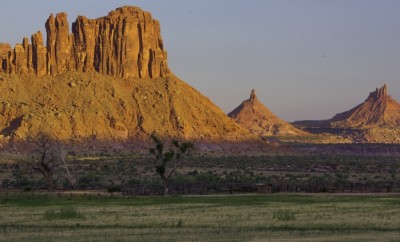Environment
How to protest for the environment

Image: Wikimedia
Recently, the planned installation of the Dakota Access Pipeline through the Standing Rock Sioux reservation inspired a protest from concerned residents and environmental activists. Over the next few weeks, the police and protestors became locked in an increasingly tense stand-off that saw the use of tear gas and waves of arrest.
The media has taken an unusual level of interest in the ongoing protests, partly because of the arrests of famous people like Shailene Woodley, who stars in the Divergent series of movies, and partly because the demonstrations have reached a level of violence on both sides that we don’t often see.
Police have responded to intractable protestors with pepper spray and rubber bullets, while the protestors have been lobbing firebombs at police.
The protests are a demonstration of how protests can quickly turn violent, especially in an era of increasingly militarized police. It’s also a chance to address a few things to remember when you decide to join in on environmental protests.
First, do it peacefully.
Protesting is an important aspect of democratic participation. The founding fathers considered it so important as a way to speak to power that they enshrined the right to peaceful assembly in the constitution. But the constitution doesn’t protect the right to violently clash with police. You won’t be legally protected if you do. And the fact that you were protesting won’t chance the stiff criminal penalties you’d normally face for assaulting police officers.
But not only does a peaceful protest protect you from legal trouble, it’s also more effective. Martin Luther King Jr. and Gandhi weren’t just advocates for civil disobedience because they were not violent people. They knew that, in order to get the rest of the world on their side, they had to be better people than those who were oppressing them.
And a group of peaceful protestors being abused by police attracts a lot more sympathy for their cause than if they were burning down stores and getting into fist-fights with the officers.
Secondly, know your rights.
For instance, while the government is required to allow you to use public land for protests, they can on some occasions require a permit ahead of time. Check the laws in your local area to know what they require.
Don’t let your protest drift onto private property. Police can, and probably will, arrest you for trespassing. If you are arrested, be aware of what your legal rights are in that situation. For instance, the constitution permits you the right to remain silent until you are able to speak to a lawyer. Most of the time, it is a good idea to do so. Police can’t use the fact that you didn’t say anything against you, but if anything you say at the time could be incriminating, they can.
Finally, come prepared for things to get ugly.
It’s probably a good idea to carry a first aid kit in case anyone gets hurt. Keep your phone and ID on you along with a bit of emergency cash. Don’t just stuff them in your pockets though, since they could fall out, and a large gathering like a protest is a great opportunity for pickpockets.
Wear comfortable shoes and maybe an extra layer of clothes. And if you’re going to be on the front lines of the protests, a pair of safety goggles might save you from serious injury.
Always be aware of how the protest might look to the media since the point of protesting is to get the larger public on your side regarding an issue. Real change comes from widely applied public pressure on the government to change laws.
And you might be surprised how powerful it can be.





0 comments